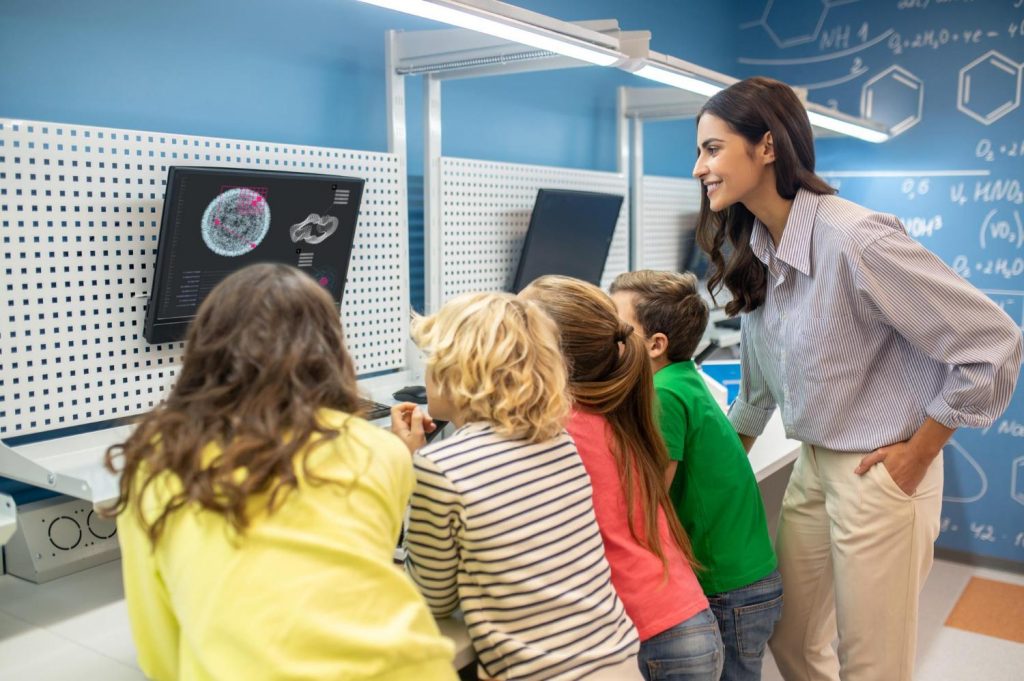AI technologies in K-12 education present diverse strengths and opportunities for enhancing learning experiences, but significant weaknesses related to organizational support and ethical threats require careful consideration for successful implementation.
Objective: The main goal of this study was to conduct a comprehensive SWOT (Strengths, Weaknesses, Opportunities, Threats) analysis of artificial intelligence technologies in K-12 education, providing a theoretical foundation for empirical studies and offering practical recommendations for educators and policy-makers considering AI integration in educational settings.
Methods: The researchers conducted a systematic literature review using the SWOT framework as an analytical tool. They searched four major databases (Scopus, Science Direct, Web of Science, and JSTOR) using Boolean operators with keywords including "strengths OR weaknesses OR opportunities OR threats" AND "AI OR artificial intelligence" AND "education." The study included articles published between 2020-2024, focusing on English-language publications with an H-index of 25 or higher for journal articles. After applying inclusion and exclusion criteria through a PRISMA-guided elimination process, 27 articles were selected for analysis. The inclusion criteria focused on educational applications of AI in K-12 settings, while exclusion criteria eliminated papers not meeting research objectives or focusing on areas outside K-12 education.
Key Findings:
The SWOT analysis revealed multiple dimensions of AI integration in K-12 education:
Strengths: AI technologies demonstrate significant potential through their diversity of tools, including conversational agents, educational robots, and virtual/augmented reality environments. Generative AI, particularly ChatGPT, excels in three key areas: teaching and learning (personalized experiences and streamlined administrative tasks), educational content creation (lesson plans, quizzes, and multimedia resources), and enhanced human capabilities (improved information processing and creativity). The study also identified various theoretical frameworks (ASPID, AI-TPACK, SAMR, PIC-RAT) that support systematic AI integration.
Weaknesses: Key internal factors hindering AI adoption include insufficient organizational support, lack of practitioner trust in AI technologies, and concerns about result accuracy. The research highlighted particular issues with automated grading systems, especially for tasks requiring argumentation skills, where AI scores often disagreed with human evaluators.
Opportunities: AI presents promising possibilities for curriculum integration, creating immersive learning experiences without space-time constraints, developing critical thinking and collaboration skills, enabling personalized education for diverse learners including students with special needs, and supporting teacher professional development through accessible online training programs.
Threats: The analysis identified significant ethical concerns including algorithmic bias, discrimination risks, and insufficient transparency in AI decision-making processes. Additionally, there are concerns about students developing over-reliance on AI technologies, potentially diminishing essential human skills like critical thinking, problem-solving, and communication abilities.
Implications: This research contributes to the field of AI in education by providing a structured framework for understanding the multifaceted nature of AI integration in K-12 settings. The findings emphasize that successful AI implementation requires not only technical capabilities but also comprehensive understanding of pedagogical and ethical principles. The study offers evidence-based guidance for educators and policy-makers, highlighting the need for balanced approaches that maximize AI's strengths and opportunities while addressing its weaknesses and threats. The research supports the development of AI literacy programs for teachers and the importance of maintaining human-centered approaches in educational technology integration.
Limitations: The study acknowledges several limitations, including its reliance on existing literature rather than empirical data collection. The systematic review approach, while comprehensive, may not capture all nuances of practical AI implementation in diverse educational contexts. The researchers note that extending findings requires empirical studies with quantitative approaches and expert interviews to identify overlooked factors and assess the significance of each element in the SWOT analysis.
Future Directions: The authors suggest multiple avenues for future research, emphasizing the need for in-depth empirical studies that examine AI's role in teacher professional development and assess the impact on teacher attitudes. They recommend investigating AI's effects on student learning in personalized education contexts and conducting studies that combine quantitative approaches with expert interviews. Future research should explore long-term impacts of AI integration across diverse educational settings and examine the effectiveness of different theoretical frameworks in guiding AI implementation. The researchers also suggest studying the development of AI literacy programs and their impact on successful technology adoption in K-12 environments.
Title and Authors: "SWOT Analysis of the Use of Artificial Intelligence Technologies in K-12 Education" by Mina Alhiane and Youssef Nafidi from the Faculty of Educational Sciences, Mohammed V University, Rabat, Morocco.
Published on: May 27, 2025
Published by: TEM Journal, Volume 14, Issue 2, pages 1355-1366
